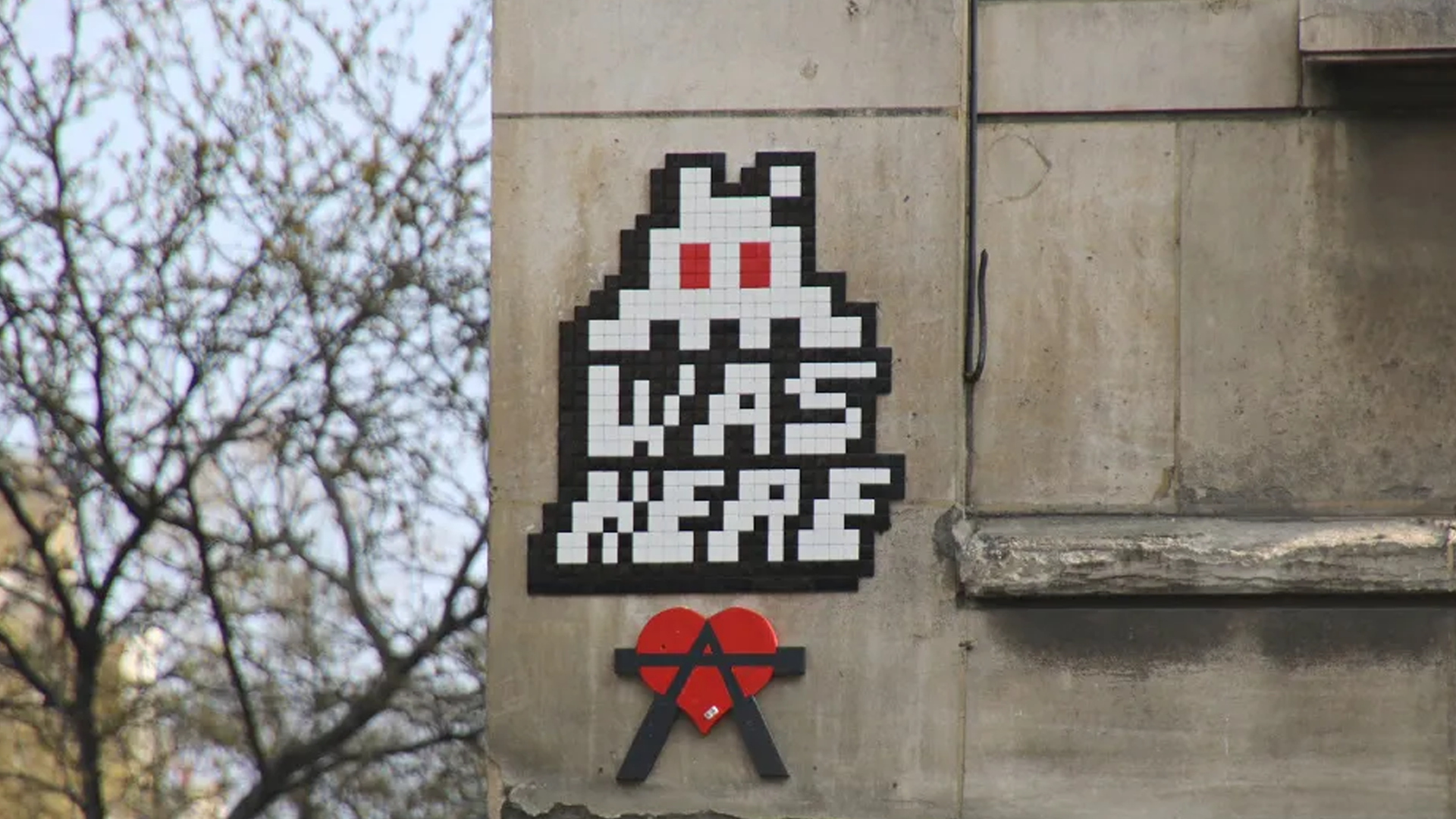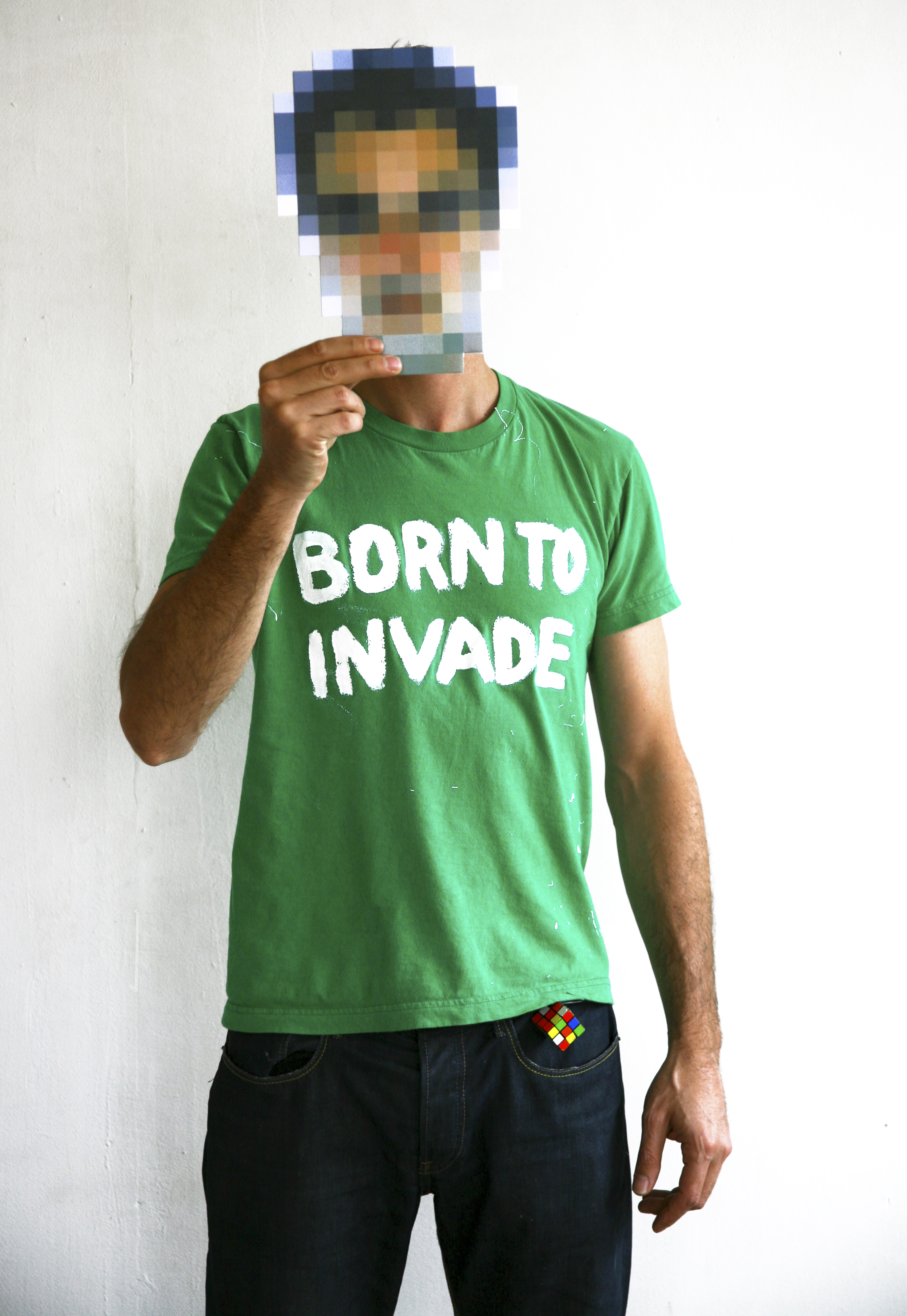Invader

Invader, a masked French artist born in 1969, has been liberating 8-bit aliens from their digital confines and embedding them into the physical world since the late 1990s. Inspired by the 1978 arcade game Space Invaders, he began installing ceramic tile mosaics of pixelated characters throughout Paris—at night, anonymously, and often without permission.

His Space Invaders Project reimagines urban architecture as a global game board. Each new installation earns a score based on complexity, size, and location. By 2025, Invader had installed nearly 4,000 works across 79 cities on 6 continents. Like video game trophies, these mosaics are scattered across rooftops, bridges, monuments, and hidden corners, encouraging the public to explore and interact with their environment.

Beyond nostalgia and play, Invader’s work is deeply philosophical. He challenges the exclusivity of gallery spaces, bringing art to everyone and redefining how we engage with cities. The project’s pixelated aesthetic, borrowed from digital screens, transforms public walls into physical canvases. His creatures are cultural symbols—quirky, retro, and subversively clever—who question the commercial gatekeeping of art and reclaim public space with wit and charm.

By keeping his identity hidden, Invader elevates the message above the messenger. He defines himself as an 'Unidentified Free Artist' and continues to invade urban space with joy, precision, and revolutionary intent. His legacy is part game, part movement, and wholly art without permission.

?
How does Invader’s anonymity enhance or complicate the impact of his work?
In what ways does the Space Invaders Project redefine public space?
Why are Invader’s pixelated mosaics so effective at capturing attention?
What does Invader’s work suggest about the relationship between nostalgia and art?
How does Invader challenge the traditional gallery model?
What are the legal and ethical questions raised by unauthorized street art?
How does Invader's art reflect cultural globalization while maintaining local relevance?
Dig Deeper
A deep dive into Invader's anonymous art world, exploring his techniques, legacy, and influence on street art and digital culture.
Discover more

Banksy
With every stencil, Banksy turns walls into wake-up calls, reminding us that truth speaks loudest when it’s unsanctioned, unfiltered, and for the people. He reminds us that art doesn’t need a frame to matter, a gallery to provoke, or a name to speak volumes.

Kehinde Wiley
Kehinde Wiley flips the script on who gets to be a hero in art. By placing Black and brown bodies where history once left them out, he reminds us that representation is power, and that art can reshape not only what we see, but who we believe deserves to be seen.

Yayoi Kusama
Yayoi Kusama teaches us that even the most private pain can bloom into something cosmic. Her dots don’t just decorate, they dissolve boundaries, inviting us to lose ourselves and find something bigger: connection, healing, infinity. In her world, vulnerability isn’t weakness, it’s the gateway to wonder.
Further Reading
Stay curious!
